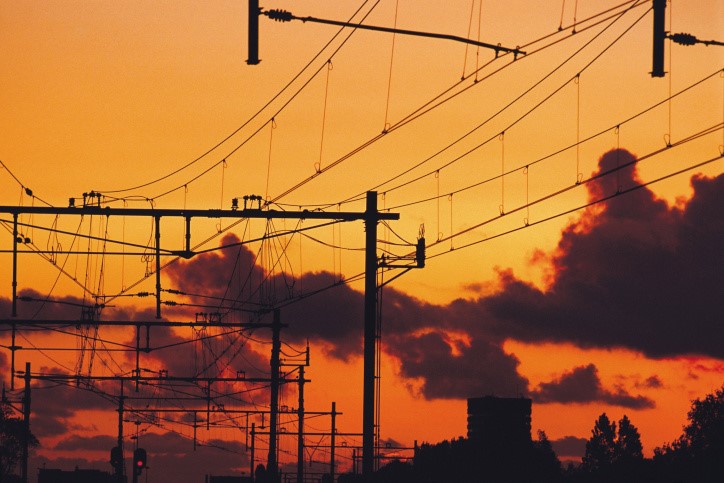
How the IoT can help power utilities deal with challenge of rooftop power plants
The recent dramatic rise in domestic rooftop solar generation is a boon for consumers, but it's causing increasing headaches for power distribution utilities.
Already there are 1.7 million Australian customers with power generation panels in place, and this number is expected to rise as more people seek ways to reduce their bills and live a more sustainable lifestyle. Interestingly, at 1pm on September 17 in South Australia, 48% of all power in the state was being supplied by the rooftop solar systems that now adorn 26% of all houses.
A challenge for distributors
This strong uptake is reshaping the way energy is generated, distributed, and used. It’s also creating growing challenges for power distribution companies. The challenge comes from two important aspects of distributed energy resources:
- The power industry estimates only 30% of the energy produced by a household is actually used on premises and the rest is fed back into the network
- When such a great portion of customers is relying on locally generated energy it causes rapid changes in the balance of power demand and generation.
The bottom line is that distribution networks were never designed for two-way flows of power. They were built to transfer power in one direction - from a large generation plant to end users.
Their feeders and transformers are now operating in conditions that differ significantly from their initial design and performance decays. In addition, as power demand increases along with locally distributed generation, feeders’ thermal limits may be reached and power quality issues eventually appear.
Balancing power demand and generation therefore becomes a local issue. This is because renewables can experience very rapid changes in output levels while the distribution network has no means of providing a balance. It must rely on the much slower reacting transmission network or suffer the consequences at power quality level.
Therefore, there is an urgent need to implement measures that can kick in within the required timeframe when an unbalanced supply-demand situation occurs.
Better monitoring required

Another issue comes from the fact that Australia's power distribution network is mostly monitored in its high and medium-voltage areas. When it comes to the low-voltage network, where most customers are connected, there is no ability for monitoring and so operators are essentially unaware of what’s happening as customer load profiles change.
Also, the network assets involved might be 30, 40 or even 50 years old and be significantly affected by out-of-design working conditions such as reverse energy flow.
As a result, better monitoring is urgently needed to understand the impact of solar generation and the new patterns of distribution that are occurring. Operators need to have ways to ensure that their assets can be controlled and not damaged.
Alternative monitoring options
One option is to connect every distribution transformer back to the central control room, where the received data is processed and analysed. However, this would require an enormous investment to establish the required point-to-point connections and eventually cause a massive rise in workloads for control centre staff.
Another option is to use Industrial IoT, through the installation of low-cost sensors and wireless communication gateways that collect and process data locally. These can discriminate between significant events and warnings to be sent to the control room and those that are within the expected operational values and don’t require further action. This option is a far more economical way to collect and process required information.
As the voltage decreases in the network, so does the value of the assets, however their number increases. Therefore, the industrial IoT approach is much more cost effective and allows the distribution network to be closely monitored and new ways developed to better interact with the growing number of energy generating sources.
Information can also be provided to other parts of the electric system. For example, traditional generation can be alerted before a generalised drop in rooftop solar generation occurs in a large area, due to cloud cover for example. The generator can then be ready to provide the required power as needed in real time.
Streamlining the balance between rooftop solar generation and local demand can also be improved by the combined action of PV and batteries or other storage capacity. This maximises efficiency while minimising any detrimental impact to the electricity supply through the grid.
Changes in the local balance between generation and demand can be quite sudden and need local solutions, so data must be collected and processed locally for two main reasons:
- Centralised processing of large volumes of data requires long times and a lot of resources
- The latency of collecting data, sending it to a centralised platform, processing and sending results back to the gateway for action, is far longer than the required reaction time to network events, if power quality is to be maintained and service reliability guaranteed.
A staged approach
For organisations that have always worked with operational technology, such as SCADA systems, which are generally totally isolated from other company IT systems and the internet, an IoT strategy as described, can be scary to contemplate. There are significant security issues that need to be considered and resolved before internet-connected devices are used to control the power grid.
Additionally, connecting the plethora of network components required to collect data and establish two-way communication will require the use of a range of different technologies, protocols and standards. Operators also have to know the connection points, characteristics and energy states of all panels and batteries being used in the mix.
For this reason, the best strategy for distribution companies is to take a phased approach to the introduction of IoT devices. Begin by using them to monitor the low-voltage network. Data can be collected from devices such as transformers, reclosers, sectionalisers, circuit breakers and relays and processed locally in the gateways to generate warnings whenever the operational parameters overcome specific thresholds.
These signals can be monitored in the existing systems (ADMS) or have a system on their own that is then integrated to provide a continuous view of the network across different voltage levels.
For this to be achieved, gateways must have sufficient intelligence to adapt the data sampling rate to the varying conditions of the assets, and increase the amount of collected data when a deviation from normal occurs. In these cases, data is fed back to the monitoring centre that is alerted to the problem.
The generated warning can be very finely defined, as the gateways are able to process mathematical algorithms and run specific software applications to extract valuable information for operators. They can also increase the sampling rate upon request (or autonomously) so that any transient effect can be clearly spotted and analysed. The ability to elaborate data locally thus reducing the amount of data that is sent out of the gateways is also important to reduce the cost of wireless communication.
Taking further steps
A pure monitoring function does not represent any threat to the control of any network asset. Once operators are comfortable with this, some level of automation can be implemented, using IoT data for basic operations. This will help with efficiency but any problems won't have an impact on the resilience of the network.
Then, once all issues of security have been addressed, and operators are familiar with the simple operating instructions, IoT enabled devices can be used to their full potential for more complex control of the network. As experience increases, new algorithms and software applications can then be deployed in the gateways to produce new warnings or to increase the healing capacity of the network and its connected IoT-enabled assets. They can also perform the combined action of a number of neighbouring gateways in case of events affecting larger portions of the network.
This gradual approach will ensure the benefits of IoT can be realised while any associated risks are minimised. Both distributors and consumers can benefit from the growth of residential generation and the network will be best placed to deliver electricity as required.

Add new comment